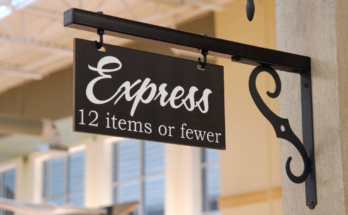The first time I heard an ad for Noom—the so-called “anti-diet” weight-loss app—I was carrying more than a few extra post-anorexia pounds. The other things I carried far outweighed the weight gain: namely, a functioning brain and a fuller outlook on life and my self-worth. Still, I wasn’t exactly at peace with my body, and Noom caught my attention. If I was “sick of dieting,” the ad told me, then Noom was for me.
Flash forward to this week: When I saw Noom trending on Twitter, I was happy to see it was because of people critiquing the app. Many of these take-downs were pretty funny even as they pointed out the glaring contradictions inherent in any weight-loss food-monitoring program that promises it is “not a diet.” In terms of semantics, mindset, and maybe physics, the “anti-diet weight loss program” is not a thing.
It was with this history of disordered eating and my current state of skepticism that I recently tried a two-week free trial of Noom (if I had forgotten to cancel my subscription, I would have been charged $59 per month or $199 per year; I did not forget). Maybe I’ve set myself up as an unreliable narrator, in which case, feel free to read the following with a raised eyebrow. However, I do have unique insight into exactly the sort of mindset Noom targets/preys upon: People who are desperate to hack the psychological side of weight loss, leaving them finally free to eat “intuitively”—all while getting down to their desired size (which is “thin,” always thin). I have an intimate understanding of diet culture and the weight-loss landscape. I’m simultaneously suspicious of and drawn toward every ad for an “anti-diet” diet, and I know I’m not alone in that. So, what does Noom’s “not a diet” weight loss look like?
What intuitive eating actually is (or should be)
If Noom’s approach sounds familiar, it might be due to the recent widespread popularity of intuitive eating. The concept sounds like a promising rejection of diet culture: What if you could simply eat when you’re hungry, and stop eating when you’re full? Maybe if you did, your body would naturally take on its ideal form?
Rather than prescribing rules about what, when, and even why you can eat, intuitive eating is supposed to help you get back in tune with your body’s physical (as opposed to emotional) signs of hunger and fullness: a true “anti-diet.”
This approach (which also pushes back against diet culture generally) has made intuitive eating a popular component of DIY eating-disorder recovery. It’s often the first stop people take on their necessary journey to unlearning restriction, binge-eating, and more from the spectrum of disordered food behaviors. However, as the term has gained popularity across social media, a lot of so-called intuitive eating practices seem to have drifted from that original purpose. Certainly my Instagram explore page loves to show me health influencers taking big, proud bites of “junk” or “fear” foods, like donuts and pizza. The hashtag: #intuitiveeating.
As Kaitlin Ugolik has previously written for Lifehacker, intuitive eating is “neither a fad diet nor a license to binge.” The idea is not to “intuit” that you should eat as many donuts as possible day after day. Instead, it’s about rejecting the very diet mentality that would drive you to restrict those donuts, and then binge those donuts, and then feel shame, and start restricting those donuts again, and on and on. This rejection of diet culture is what tends to get lost in the popularity of #intuitive #eating across the apps. The very act of broadcasting “intuitive eating” to hundreds, thousands, or millions of followers implies we’re not exactly removing judgment from our relationship to food at all.
Still, any attempt to break away from diet culture is a good thing, right? After all, Noom promises to help you finally transform your habits and mindset around food. “Rather than just focusing on what you should or shouldn’t eat,” their site reads, Noom’s “psychology-based approach helps you change the way you think and feel about eating.” An emphasis on thoughts and feelings is how Noom distinguishes itself from other weight loss apps—in theory. Here’s what it looks like in practice.
Noom is a feel good psychology-coated calorie counter
Compared to competitors like MyFitnessPal, Noom’s design is notable for not putting numbers front and center. When you open the app, it doesn’t look like other calorie tracking apps…at first. For instance, your eyes are directed to your daily psychology lesson, rather than to logging food and exercise.
Unfortunately, Noom’s design doesn’t change the fact that the crux of the app is about achieving a caloric deficit. Because if we’re talking straight-up physics, in order to get you to lose weight, Noom needs to get you to a caloric deficit. To do this—as happened to any number of others before me—Noom started me out around 1,400 calories a day. That is not enough calories.
Extreme caloric deprivation aside, when it comes to the substance of Noom’s psychology, I’ll share a slice of what I wrote in my Notes app as I listened to my daily lessons during my two week trial:
- Yes, I know that a grape is more filling than a raisin.
- Yep, I know that consistency is key to change.
- Yeah, I know that lettuce has fewer calories than peanut butter.
- YES, GRAPES HAVE MORE WATER THAN RAISINS.
- THIS MAKES GRAPES SUPERIOR.
- GRAPES OVER RAISINS. I GET IT.
To be fair, I can see how Noom’s purported focus on behavioral change would be comforting to people who have always been told they need to count every calorie in and every calorie out. Physics be damned—that’s a recipe for a dangerous relationship with food. Unfortunately, Noom doesn’t transcend the “calories=bad” framework either. It merely color-codes it.
Green means go, red means stop
By far, though, the most holy shit this is asking for an eating disorder aspect of Noom is the way it color-codes different foods. Foods with high water content, like most fruits and vegetables, are “green” foods. Foods that are calorically-dense, like oil and most desserts, are “red” foods. Other red foods: peanut butter and full-fat yogurt.
Noom seduces you with anti-diet rhetoric. The language employed—like “progress not perfection”—is exactly what you want to hear when practicing something like intuitive eating. Every step of the way, Noom states that there’s no such thing as “good” or “bad” food, and healthy behaviors mean you never need “permission” to eat certain things.
Their actual food-logging system, on the other hand, serves up which foods are good and bad on a color-coded platter. Any toddler can tell you green means go and red means stop. To buy into the idea that you can feel the same toward green foods as red ones would require you to unlearn a lifetime of understanding. And they didn’t make full-fat yogurt green, did they?
Restriction won’t sustain you, but it will sustain the diet industry
If you still aren’t convinced Noom is the same old diet culture in disguise, consider this: It’s not even effective. In interpreting a 2016 study that looked at 36,000 users who stuck with Noom for six months or more, clinical psychologist Alexis Conason wrote for Psychology Today about the app’s less-than-impressive success rates. Although the 2016 study claims 77% of users lost weight while using the app (a statistic widely used in Noom promotional materials), Conason pointed out another way to interpret the data: 86% of users failed at Noom within a year, and 99% of people couldn’t stick with the plan for six months. Those numbers don’t scream “sustainable lifestyle changes.”
The low success rate isn’t actually a surprise. In a remarkable piece for Bustle, Virginia Sole-Smith points out that, “if most people respond to the restriction of dieting by eventually eating more and regaining weight, then those same people are likely to sign back up for Noom later.” From a business standpoint, then, Noom doesn’t really want you to be at peace with food. Because if you were truly at peace with food, why would you be logging your meals into a color-coded system?
You don’t need Noom
I certainly see the appeal of Noom’s “psychology-backed” and totally-not-a-diet promises. Particularly for anyone in eating-disorder recovery, Noom can look like a safe way to regain control without actually relapsing. Sadly, that’s just not the case.
It’s important to ask questions of any app trying to make money off of you. Why wouldn’t Noom want to keep you in a cycle of restriction that also keeps you renewing your subscription? Why would Noom ever want you to achieve true body neutrality (or positivity)? Why would Noom be any different from any other diet?
You can make strides to eat healthier without counting every calorie. True intuitive eating is still a worthy goal as you strive to break away from the stranglehold of diet culture. I’m, uh, not a fan of Noom, but I don’t think its potential for damage is particularly notable, given that this is the diet industry we’re talking about. Because yeah, no: Any claim Noom is “not a diet” is bullshit.



